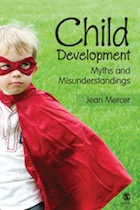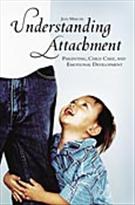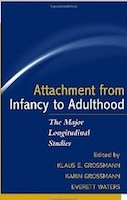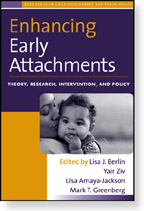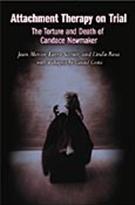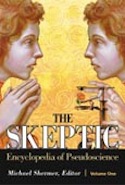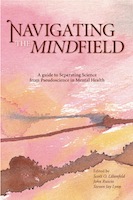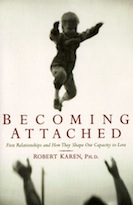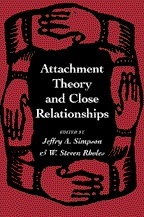
Selected
Bibliography
2016
“Evidence of Potentially Harmful Psychological Treatments for Children and Adolescents,” Jean Mercer, PhD, Child and Adolescent Social Work Journal, 15 Dec 2016, 1-19.
Abstract: This paper applies the concept of potentially harmful psychotherapies (PHTs; Lilienfeld, Perspectives on Psychological Science 2(1):53–70, 2007) to concerns about potentially harmful treatments for children and adolescents (PHTCs). I propose that such treatments can be identified by methods derived from the Adverse Childhood Experiences (ACE) Study and from the NIS-4 study of abuse and neglect, as well as by their plausibility or congruence with established child development theory and research. Five psychological treatments for children and adolescents that have been reported as harmful are examined, using evidence from published materials, journalists’ reports, legal documents and Internet sites. Details of treatment and outcomes are compared to relevant ACE and NIS-4 criteria and to plausibility, and empirical support for the treatments is examined. The examined treatments use methods that would be considered adverse childhood experiences or abusive or neglectful care events if they occurred outside a therapeutic setting. Most, but not all, lack empirical support of effectiveness and are incongruent with established information about child development. Risks associated with PHTCs can thus be identified through close examination before children are exposed to them and harmed. Prevention or reduction of PHTC use may be possible. Public and professional education about PHTCs are essential parts of child protection in this context and are arguably an ethical obligation of both social workers and psychologists.
APSAC Position Paper on the Corporal Punishment of Children
The American Professional Society on the Abuse of Children (APSAC) calls for “the elimination of all forms of corporal punishment and physical discipline of children in all environments including in schools and at home. Corporal punishment is herein defined as ‘the use of physical force with the intention of causing a child to experience pain, but not injury, for the purpose of correcting or controlling the child’s behavior.’”
A RADical Idea: A Call to Eliminate “Attachment Disorder” and “Attachment Therapy” From the Clinical Lexicon, by Brian Allen, Evidence-Based Practice in Child and Adolescent Mental Health, 9 May 2016; 1(1).
Attachment disorder” and “attachment therapy” are common terms used in applied clinical practice. However, these terms are not typically employed in research settings or published scientific papers. In this article, the author reviews the theoretical tenets and empirical research of attachment theory and discusses how these two terms fail to coincide with the scientific knowledge. The historical development of these phrases is considered, as well as the potential impact they have on clinical practice. The ultimate conclusion is that the “attachment disorder” and “attachment therapy” constructs are hindrances to evidence-based clinical practice and should be eliminated from the clinical lexicon.
...[C]hildren placed in appropriate foster care homes who previously displayed the inhibited/ withdrawn subtype of RAD no longer displayed these symptoms when followed up months later (e.g., Smyke et al., 2012). Zeanah and Gleason (2015) recently summarized that “in studies of children adopted out of institutions, there are no reports of children with (inhibited) RAD ... suggesting that signs of (inhibited) RAD diminish or disappear once the child is placed in a more normative caregiving environment.” They further opined that these results make it unclear “whether additional interventions beyond family placement may be necessary.”
“Ordinary Child Abuse versus ‘Nancy Thomas Methods’: What Investigators Should Know,” Jean Mercer, PhD, ChildMyths, 25 Jan 2016. Mercer lists the harsh, ideologically-based parenting methods that investigators may fail to recognize in child abuse cases.
2015
“Revisiting an Article About Dyadic Developmental Psychotherapy: The Life Cycle of a Woozle,” Jean Mercer, Child and Adolescent Social Work Journal, Oct 2015, 32(5):397–404.
***NOTE: In 2016, this paper was reprinted in this journal’s special virtual issue dedicated to child welfare. Abstract:
This paper examines a 2006 Child and Adolescent Social Work Journal article (Becker-Weidman in Child Adolesc Soc Work J 23:147–171, 2006a) that purported to show the effectiveness of Dyadic Developmental Psychotherapy (DDP). It is suggested that this claim, based only on weak evidence, has been the foundation of a “woozle” (Nielsen in Psychol Public Policy Law 20:164–180, 2014), a belief system that persists simply because the original statements have been repeated so often. A history of repetition and republication is traced, and current statements by the UK National Health Service and other sources are presented as evidence that acceptance of DDP began with repetition of the 2006 claims. Suggestions are made for editors and reviewers, who are in a position to prevent the creation of new woozles by carefully examining the claims made in submissions to their journals.
2014
Alternative Psychotherapies: Evaluating Unconventional Mental Health Treatments, by Jean A. Mercer, Rowman & Littlefield.
This book addresses concerns about current and newly-emerging mental health treatments that are considered "unconventional." In a parallel to complementary and alternative medical treatments, alternative psychotherapies lack research support, are at odds with established information about human personality and development, and may actually be harmful. Professionals and students in the helping professions may find such treatments confusing and difficult to differentiate from emerging therapies that have not yet established a foundation of evidence; this is especially problematic if clients propose using unconventional therapies they have found on the Internet. Alternative Psychotherapies examines a series of unconventional treatments in terms of the research supporting them, their theoretical and historical backgrounds, and the potential or documented adverse events that may be associated with them. Therapies for both adults and children are included, and topics range from recovered memory therapies to bodywork to treatments for autism and to special education issues. Alternative psychotherapies frequently share certain historical backgrounds, and psychotherapists can use historical insights as well as an understanding of basic research rules and psychological theory to identify unconventional treatments other than the ones discussed. The book concludes with a discussion of the advantages and disadvantages of greater regulation of alternative therapies, as compared to the current situation in which few mental health interventions are banned or limited by law.
2013
"Attachment therapies," in R Cautin & S Lilienfeld, eds., Encyclopedia of Clinical Psychology, New York: Wiley-Blackwell.
Child Development: Myths and Misunderstandings, JA Mercer, 2nd ed., Los Angeles: Sage.
Jean Mercer’s most recent book, "Child Development: Myths & Misunderstandings", came out of her teaching experiences and her awareness of the things everybody knows, that don't happen to be true. She is pursuing the same issues on http://childmyths.blogspot.com. She would like instructors who are considering using "Myths & Misunderstandings" to note the unpublished paper on childmyths.blogspot-- a discussion of the use of critical thinking concepts in teaching developmental psychology.
“The negative consequences of over-diagnosing attachment disorders in adopted children: The importance of comprehensive formulations,” Woolgar M and Scott S, King's College London, UK, Clinical Child Psychology and Psychiatry, 2013 Apr 10.
Abstract:
In many child services across health, education and social care, 'attachment disorder' is a popular description and explanation for complex presentations of children who have been neglected or maltreated and is frequently used to describe fostered and adopted children. Very often the use of this term bears little resemblance to the established diagnostic systems, nor indeed to attachment theory as conceptualised by Bowlby. Its misuse can lead professionals to overlook commoner and more treatable conditions, to the detriment of the children. In fact both reactive and disinhibited attachment disorders are rare, but are becoming better characterised by high quality research. Poor understanding about the attachment disorder construct can pose particular problems for clinicians working with adopted children. The current paper briefly reviews the practical difficulties with the attachment disorder diagnosis as applied to adopted children and uses four case studies taken from a specialist Adoption and Fostering Service to highlight some of the problems for services working with adopted children. Finally, we propose some provisional recommendations for the assessment and treatment of adopted children and their families, which aim to be consistent with attachment theory as well as with the existing evidence base on wider child mental health problems.
2012
"Attachment in children and adolescents," JA Mercer (Childhood Studies section) H. Montgomery, ed, Oxford Bibliographies Online.
"Reply to Sudbery, Shardlow, and Huntington: Holding therapy," JA Mercer, British Journal of Social Work, 42:556-559.
“Predictors of treatment use among foster mothers in an attachment-based intervention program,” Bick, Dozier and Moore, Attachment & Human Development, Sep 2012, 14(5):439-452. [Full text]
2011
“Attachment theory and its vicissitudes: toward an updated theory,” JA Mercer, Theory and Psychology; 21:25-45.
Abstract:
This paper attempts first steps toward reworking Bowlby’s attachment theory and formulating an updated version. The paper examines 11 tenets of attachment theory as it was originally proposed by Bowlby and colleagues. These tenets are discussed in terms both of historical and recent criticisms, and of relevant research. Reasons are given for why the discussion omits work involving animal models or focused on measurement issues. In conclusion, the tenets are assigned to four categories: ideas that have received little criticism; ideas that have been criticized but are generally accepted, although they need to take new research evidence into account; ideas that have been rejected or questioned more than they have been accepted; and ideas that have been rejected or extensively reinterpreted.
"The concept of psychological regression: Metaphors, mapping, Queen Square, and Tavistock Square," JA Mercer, History of Psychology, 14:174-196.
"Some aspects of CAM mental health interventions: Regression, recapitulation, and 'secret sympathies'," JA Mercer, Scientific Review of Mental Health Practice, 8:36-55.
Book review: Rachel Stryker's (2010) The Road to Evergreen, JA Mercer, Scientific Review of Mental Health Practice, 8:69-74.
The Use and Abuse of Attachment Theory in Clinical Practice With Maltreated Children, Part I: Diagnosis and Assessment, by Brian Allen, Trauma Violence & Abuse, Feb 2011; 12(1):3-12.
Abstract:
Debate has ensued regarding the appropriate assessment and diagnosis for school-age children who display severe behavioral problems as a result of previous abuse and neglect within the primary attachment relationship. The current nomenclature recognizes reactive attachment disorder and some clinicians have suggested broader categories of attachment disorder. These attempts at classification are often criticized on empirical grounds; however, often lost in these criticisms is the fact that that these diagnostic approaches often misapply attachment theory and research. This article summarizes the original contributions of John Bowlby and other attachment researchers to our understanding of child development, examines misguided attempts to apply attachment theory to the diagnosis and assessment of maltreated children, and offers a diagnostic conceptualization and assessment recommendations consistent with the available attachment research.
The Use and Abuse of Attachment Theory in Clinical Practice with Maltreated Children, Part II: Treatment, by Brian Allen, Trauma Violence & Abuse, Feb 2011; 12(1):13-22.
Abstract:
Recent years have witnessed a growing debate about the role of attachment theory in the treatment of maltreated children. Many professional organizations have issued statements against physically restraining children as some attachment therapists promote; however, often lost in these debates is the fundamental issue of what attachment theory and research proposes as the appropriate form of treatment. Given that these attachment therapies are often directed toward maltreated children, it becomes critical for clinicians working with abused and neglected children to understand these issues and recognize unethical and dangerous treatments. This article provides a summary of the theoretical and empirical bases for the use of attachment theory in the treatment of maltreated school-age children, an examination of the ways questionable approaches to treatment have misinterpreted and misapplied attachment theory, and a conceptualization of attachment-based intervention grounded in current theory and research.
2010
“To have and to hold: questions about a therapeutic service for children,” J Sudbery, SM Shardlow & AE Huntington, British Journal of Social Work, 2010; 40:1534-1552.
Abstract:
Therapies for children and young people that using ‘holding’ as an intervention for severe difficulties with attachments are controversial and raise many questions. At least one major professional organisation has stated that these therapies should be banned. This paper discusses the implications of a study of a service for children (and their families where appropriate) described as having attachment difficulties or a diagnosis of attachment disorder and where ‘holding’ techniques are employed as part of the therapeutic intervention. The views of a range of stakeholders (including children, young adults who had previously used the service, purchasers, outside professionals, and staff) about this service were collated directly by interview. The article identifies howthis study can refine and informthe broader questions about ‘attachment and holding’ therapies. Proponents argue that the service offered provides effective assistance for some of the most hurt and difficult children in society. Opponents state that some of the techniques involved have not been evaluated, are ethically questionable and are not based on a validated theoretical mechanism. This paper highlights a number of core questions about attachment and ‘holding’ therapy and the findings of the study provide a commentary on these questions.
“360 Degrees of Human Subjects Protections in Community-Engaged Research,” by L Friedman Ross, Science Translation Medicine, 2010 Aug 18; 2(45):1-4. [DOI]
Abstract:
With the introduction of the new National Institutes of Health Roadmap in 2003, there has been a growing emphasis on translational research. Translational research challenges current human subjects protections guidelines that were written in the 1970s and were focused on the protection of the individual participant in a clinical drug trial. Community engagement requires a critical examination of the range of risks that may arise when communities are both participants and partners in research, in order to promote appropriate and effective protection of human subjects as individuals and members of communities. Given that the principal investigator has ultimate responsibility for ensuring the ethical integrity of the research, researchers should be aware of the human subjects protections delineated in the federal regulations that must be fulfilled and the other entities that can help ensure human subjects protections.
“Science and pseudoscience in developmental disabilities: guidelines for social workers,” BA Thyer & M Pignotti, Journal of Social Work in Disability & Rehabilitation, 2010; 9:110-129. [DOI]
Abstract:
Individuals with a developmental disability can now be provided a variety of empirically supported treatments that have been shown to be useful in promoting educational attainments, social and vocational skills, and self-care, and in reducing behavioral problems. Unfortunately, a large number of pseudoscientific or bogus therapies continue to be offered to this population and their families. We review the characteristics of pseudoscientific and bogus treatments and provide several examples of unsupported or harmful interventions offered by contemporary social workers and other human service professionals, to the detriment of people with disabilities. We encourage social workers to identify pseudoscientific interventions and avoid providing these, in favor of using empirically supported treatments.
2009
"Reactive Attachment Disorder (RAD): Appropriate and Inappropriate Application of the Reactive Attachment Disorder Diagnosis on an Age Continuum from Birth through Age 18," D Potter, C Chevy, L Amaya-Jackson, K O'Donnell, RA Murphy, (Consultant Charles H. Zeanah, Jr., MD), Clinical Guidelines Series 2009, Prepared by the Center for Child & Family Health, 2009 Mar 16.
"Child custody evaluations, attachment theory, and an attachment measure: the science remains limited," JA Mercer, The Scientific Review of Mental Health Practice, 7:37-54.
Publisher Description: The author Jean Mercer uses intriguing vignettes and questions about children and families to guide readers in thinking critically about 51 common beliefs. Each essay confronts commonly held misconceptions about development, encouraging students to think like social scientists and to become better consumers of media messages and anecdotal stories. The book is organized so that essays can be assigned to parallel either chronologically or topically organized child development texts.
“Effects of a foster parent training program on young children’s attachment behaviors: preliminary evidence from a randomized clinical trial,” M Dozier, O Lindhiem, E Lewis, J Bick , K Bernard & E Peloso, Child and Adolescent Social Work Journal, 2009 Feb 27; 26:321-332. [DOI]
Abstract:
Young children who enter foster care experience disruptions in care and maltreatment at a point when maintaining attachment relationships is a key, biologically based task. In previous research, we have found that young children experience challenges as they form attachments with new caregivers. They tend to push their new caregivers away, even though such children are especially in need of nurturing care. Further, many caregivers do not respond in nurturing ways when their children are distressed, which we have found is problematic for young children in foster care. We developed an intervention that is designed to help caregivers provide nurturance even when children do not elicit it, and even when it does not come naturally to them. This paper presents preliminary findings of the effectiveness of this intervention on children’s attachment behaviors. Forty-six children were randomly assigned to either the experimental intervention or to an educational intervention. For three consecutive days, attachment behaviors were reported across three distress-eliciting situations. Children whose parents had received the experimental intervention showed significantly less avoidance than children whose parents had received the educational intervention. These preliminary results suggest that the intervention is successful in helping children develop trusting relationships with new caregivers.
“Child custody evaluations, attachment theory, and an attachment measure: the science remains limited,” JA Mercer, The Scientific Review of Mental Health Practice, 2009; 7(1):.
“Nighttime maternal responsiveness and infant attachment on year,” E Higley & M Dozier, Attachment and Human Development, 2009; 11:347-363.
Abstract:
This study examined associations between mother-infant nighttime interactions and mother-infant attachment when infants were 12 months old. Forty-four mother-infant pairs participated in this study. For three consecutive nights at home, babies were observed in their cribs using a digital video system. Mothers reported on their nighttime interactions with their babies using a self-report diary and completed a questionnaire regarding child temperament. Attachment was assessed in the Strange Situation (Ainsworth, Blehar, Waters & Wall, 1978). Mothers of securely attached infants had nighttime interactions that were generally more consistent, sensitive and responsive than those of insecurely attached infants. Specifically, in secure dyads, mothers generally picked up and soothed infants when they fussed or cried after an awakening.
“Dyadic Developmental Psychotherapy is not ‘evidence-based’: comments in response to Becker-Weidman and Hughes,” JA Mercer, RS Pennington, M Pignotti & LA Rosa, Child and Family Social Work, 2009; 15:1-5.
2008
"Clinical interventions for children with attachment problems," by Tonya Cornell and Vanya Hamrin, Journal of Child and Adolescent Psychiatric Nursing, 2008 Feb 1; 21(1):35-47. [Abstract]
“Attachment issues in foster care and adoption,” M Dozier and M Rutter, in J Cassidy & PR Shaver, eds, Handbook of Attachment Theory and Research (Guilford).
2007
"Coping with early adversity: Young children’s behavioral and biological adaptations to changing caregivers," M Dozier & J Bick, Pediatric Annals, 36:205-208.
“Shortcuts cause errors in systematic research syntheses: rethinking evaluation of mental health interventions,” JA Mercer & M Pignotti, The Scientific Review of Mental Health Practice, 2007; 5(2):59-77.
Abstract:
Systematic research syntheses (SRSs) review research reports and present conclusions about interventions or about treatment of specific populations. The production of an SRS begins with evaluations of research quality (ERQs). This paper examines several ERQ approaches and notes both strengths and weaknesses that may contribute to the accuracy of a SRS conclusion. The application of one approach to a specific topic is examined. In the resulting SRS, errors in evaluation resulted both from weaknesses of the approach and from faulty application of quality criteria. Some suggestions about appropriate quality criteria are offered, emphasizing the need for meticulous assessment.
“Systematic child maltreatment: connections with unconventional parent and professional education,” JA Mercer, Society for Child and Family Policy and Practice Advocate (Division 37 of APA), 2007; 30(2):5-6.
Excerpt:
The systematic maltreatment administered by Ms. Vasquez is especially chilling because of its basis in written instructions, rather than in impulsive, angry responses to the children. What is even more disturbing, however, is the fact that a professional psychologist and at least one professional social worker advised Ms. Vasquez to follow [Nancy] Thomas’s methods, apparently without being aware either of the lack of foundation for the approach, or the ease with which the recommendations could be escalated or misinterpreted.
“Genetic, environmental and gender influences on attachment disorder behaviours,” H Minnis, J Reekie, D Young, T O’Connor, A Ronald, A Gray & R Plomin, British Journal of Psychiatry, 2007; 190:490-495. [DOI]
Behaviors suggestive of attachment disorder can be differentiated from common childhood emotional and behavioural problems and appear to be strongly genetically influenced, particularly in boys.
“Holding therapy and Dyadic Developmental Psychotherapy are not supported and acceptable social work interventions: a systematic research synthesis revisited,” M Pignotti & JA Mercer, Research on Social Work Practice, 2007; 17(4):513-519. [Abstract]
Abstract:
This article reexamines material discussed in a recent systematic research synthesis by Craven and Lee. The authors find that two of the interventions for foster children discussed by Craven and Lee were erroneously classified as supported by evidence of efficacy, and one, holding therapy, is shown to be potentially physically harmful to children. Detailed evidence is offered to show that holding therapy and dyadic developmental psychotherapy are not appropriately categorized as supported and acceptable interventions.
“Psychological treatments that cause harm,” SO Lilienfeld, Perspectives on Psychological Science, 2007 Mar; 2(1):53-70.
Abstract:
The phrase primum non nocere (“first, do no harm”) is a well accepted credo of the medical and mental health professions. Although emerging data indicate that several psychological treatments may produce harm in significant numbers of individuals, psychologists have until recently paid little attention to the problem of hazardous treatments. I critically evaluate and update earlier conclusions regarding deterioration effects in psychotherapy, outline methodological obstacles standing in the way of identifying potentially harmful therapies (PHTs), provide a provisional list of PHTs, discuss the implications of PHTs for clinical science and practice, and delineate fruitful areas for further research on PHTs. A heightened emphasis on PHTs should narrow the scientist–practitioner gap and safeguard mental health consumers against harm. Moreover, the literature on PHTs may provide insight into underlying mechanisms of change that cut across many domains of psychotherapy. The field of psychology should prioritize its efforts toward identifying PHTs and place greater emphasis on potentially dangerous than on empirically supported therapies.
Media Watch: “Wikipedia and ‘open source’ mental health information,” JA Mercer, Scientific Review of Mental Health Practice, 2007; 5(1):88-92.
“Destructive trends in alternative infant mental health approaches,” JA Mercer, Scientific Review of Mental Health Practice, 2007; 5(2):44-58.
“Shortcuts cause errors in systematic research syntheses: rethinking evaluation of mental health interventions,” JA Mercer & M Pignotti, Scientific Review of Mental Health Practice, 2007; 5(2):59-77.
2006
“Report of the APSAC Task Force on attachment therapy, reactive attachment disorder, and attachment problems,” M Chaffin, RF Hanson, BE Saunders, T Nichols, D Barnett, CH Zeanah, L Berliner, B Egeland, E Newman, T Lyon, E LeTourneau & C Miller-Perrin, Child Maltreatment, 2006 Feb; 11(1):76-89.
Controversies have arisen about potentially harmful attachment therapy techniques used by a subset of attachment therapists. In this report, the Task Force reviews the controversy and makes recommendations for assessment, treatment, and practices. The report reflects American Professional Society on the Abuse of Children’s (APSAC) position and also was endorsed by the American Psychological Association’s Division 37 and the Division 37 Section on Child Maltreatment.
Understanding Attachment: Parenthood, Child Care, and Emotional Development, Jean A. Mercer (Praeger, 2006).
Review by Emily Fenichel, Editor, Zero To Three Journal: “Clear, concise and engaging, Jean Mercer’s Understanding Attachment is a trustworthy guide for any reader who wants to learn about what the author calls the most important way of thinking of emotional development. Mercer goes back more than a century to describe psychoanalysts’ and ethologists’ contributions to understanding infants’ intense relationships to their caregivers.…After describing what we know about attachment and how we know it, Mercer ventures beyond the limits of research findings to suggest the implications of attachment theory for contemporary infants, young children, and parents.…She challenges makers of public policy, lawyers and judges, the child care community, and parents to make the effort to truly understand attachment – and to use new knowledge on behalf if all young children and families.”
“Brain Overclaim Syndrome and criminal responsibility: a diagnostic note,” SJ Morse, Ohio State Journal of Criminal Law, 2006; 3:397-412.
This brief diagnostic note identifies a cognitive pathology, “Brain Overclaim Syndrome [BOS],” that often afflicts those inflamed by the fascinating new discoveries in the neurosciences. It begins by suggesting how one should think about the relation of neuroscience (or any other material explanation of human behavior) to criminal responsibility, distinguishing between internal and external critiques based on neuroscience. It then describes the signs and symptoms of BOS, the essential feature of which is to make claims about the implications of neuroscience for criminal responsibility that cannot be conceptually or empirically sustained. It then applies the diagnostic lens of BOS to the claims in Roper v. Simmons. Finally, the article recommends Cognitive Jurotherapy [CJ] as the therapy of choice for BOS.
Outsiders Within: Writing on Transracial Adoption, Jane Jeong Trenka, Julia Chinyere Oparah, and Sun Yung Shin, eds. (South End Press, 2006).
Product Description:
...[W]hile transracial adoption is a practice traditionally considered benevolent, it often exacts a heavy emotional, cultural, and even economic toll. Through compelling essays, fiction, poetry, and art, the contributors to this landmark publication carefully explore this most intimate aspect of globalization. Finally, in the unmediated voices of the adults who have matured within it, we find a rarely-considered view of adoption, an institution that pulls apart old families and identities and grafts new ones. Moving beyond personal narrative, these transracially adopted writers from around the world tackle difficult questions about how to survive the racist and ethnocentric worlds they inhabit, what connects the countries relinquishing their children to the countries importing them, why poor families of color have their children removed rather than supported—about who, ultimately, they are. In their inquiry, they unseat conventional understandings of adoption politics, ultimately reframing the controversy as a debate that encompasses human rights, peace, and reproductive justice.
“Clarifying core characteristics of attachment disorders: a review of current research and theory,” by K Zilberstein, American Journal of Orthopsychiatry, 2006; 76(1):55-64. [DOI]
Abstract:
Reactive attachment disorder is a relatively new diagnosis that is not well studied. Conflicting ideas about its etiology and presentation pervade the theoretical, research, clinical and popular literature. Clarifying core characteristics of this disorder and distinguishing them from comorbid conditions are critical for improve diagnosis and treatment of children with attachment problems.
“IEPs and reactive attachment disorder: recognizing and addressing misinformation,” JA Mercer, Scope (Newsletter of the Washington State Association of School Psychologists), 2006; 28(3):2-6.
Guidelines that can be used to evaluate parents’ suggestions when IEP discussion is in progress.
Letter to the editor (re: age regression definition), JA Mercer, A Misbach, RS Pennington & LA Rosa, Child Maltreatment, 2006; 11:378.
2005
“Coercive restraint therapies: a dangerous alternative mental health intervention,” JA Mercer, Medscape General Medicine, 2005 Sep 8; 7(3):. [Full Article]
Abstract:
Physicians caring for adopted or foster children should be aware of the use of coercive restraint therapy (CRT) practices by parents and mental health practitioners. CRT is defined as a mental health intervention involving physical restraint and is used in adoptive or foster families with the intention of increasing emotional attachment to parents. Coercive restraint therapy parenting (CRTP) is a set of child care practices adjuvant to CRT. CRT and CRTP have been associated with child deaths and poor growth. Examination of the CRT literature shows a conflict with accepted practice, an unusual theoretic basis, and an absence of empirical support. Nevertheless, CRT appears to be increasing in popularity. This article discusses possible reasons for the increase, and offers suggestions for professional responses to the CRT problem.
“Correlates of the Randolph Attachment Disorder Questionnaire (RADQ) in a Sample of Children in Foster Placement,” Cappelletty G, Brown M, Shumate S (February 2005), Child and Adolescent Social Work Journal, 2005 Feb; 22 (1): 71–84. [DOI] "The findings showed that children in foster care have reported symptoms within the range typical of children not involved in foster care. The conclusion is that the RADQ has limited usefulness due to its lack of specificity with implications for treatment of children in foster care.”
“Take care to do no harm: harmful interventions for youth problem behavior,” DM Rhule, Professional Psychology: Research and Practice, American Psychological Association, 2005: 36(6):618-625. [DOI]
Abstract:
Youth conduct problems, delinquency, and substance abuse pose serious consequences for the youth themselves, their victims and families, and the broader society. The widespread impact of these problem behaviors highlights the importance of preventing and treating them effectively. Despite this need, an emerging literature has demonstrated that certain intervention programs for these problem behaviors, particularly those that have used group-delivery formats, have produced iatrogenic effects. The potential for intervention to produce negative outcomes raises several ethical implications and dilemmas. In this article, the author provides illustrative examples of iatrogenic effects of interventions that target youth conduct problems, delinquency, and substance abuse; discusses the relevant ethical implications raised by these outcomes; and suggests recommendations to prevent, detect, and respond to their occurrence.
“Challenges of foster care,” M Dozier, Attachment and Human Development, 2005 Mar; 7(1):27-30.
[W]e wish to challenge the very notion of foster care. We suggest that a temporary surrogate care simply does not make sense for young children. If there is anything that children need from parents, even more than food and shelter, it is knowing that parents are committed to them.
“Lessons from the longitudinal studies of attachment,” M Dozier, M Manni & O Lindhiem, in K Grossmann, K Grossmann & E Waters, eds., Attachment from Infancy to Adulthood: The Major Longitudinal Studies (Guilford, 2005):305-320.
“The influence of foster parent investment on children’s representations of self and attachment figures,” JP Ackerman & M Dozier, Applied Developmental Psychology, 2005; 26:507-520.
This study examined associations between foster mothers’ emotional investment, assessed when foster children were age 2, and foster children’s representations of self and others, assessed when children were age 5....As predicted, foster mothers who were more accepting of their children early in the child–caregiver relationship had foster children who developed more positive self-representations than children whose foster mothers were less accepting. Additionally, caregiver acceptance was associated with childrenTs quality of coping responses in response to caregiver separations, with high caregiver acceptance associated with effective solutions to separation scenarios.
“Attachment and biobehavioral catch-up,” M Dozier, O Lindhiem & J Ackerman, in LJ Berlin, Y Ziv, L Amaya-Jackson & MT Greenberg, eds., Enhancing Early Attachments (Guilford, 2005):.
Product Description:
Synthesizing the latest theory, research, and practices related to supporting early attachments, this volume provides a unique window into the major treatment and prevention approaches available today. Chapters address the theoretical and empirical bases of attachment interventions; explore the effects of attachment-related trauma and how they can be ameliorated; and describe a range of exemplary programs operating at the individual, family, and community levels. Throughout, the authors consider cross-cutting issues such as the core components of effective services and appropriate outcome measures for attachment interventions. Also discussed are policy implications, including how programs to enhance early child-caregiver relationships fit into broader health, social service, and early education systems.
"Learning to play: play deprivation among young children in foster care,” RL Comfort, Zero to Three, 2005 Mar; 25(4):50-53. [abstract]
The article is about the gradual development of play skills in interactions with adults: “If a parent sends a foster or newly adopted child to his or her room to play, the child may not be able to tolerate the situation. Being left alone in a room can be frightening for children with compromised backgrounds... The child is likely to break the toys or to come out of the room frequently to seek the parent (who may be trying to have a brief break from parenting)... It is not unusual to find foster children of 7, 8, or 9 who are still unable to play with others or to share a play environment or play equipment.... Surprises are rarely good things for foster children. While many children find surprises or abnormalities in play very funny, foster children may become very aggressive or frightened when play is not predictable. Foster children need to be able to manage their play situations, and surprises deny them this control."
2004
“Death by Theory” by Michael Shermer, Scientific American, June 2004. Attachment therapy is based on a pseudoscientific theory that, when put into practice, can be deadly.
Report #11 “Reactive attachment disorder: concepts, treatment and research,” prepared by UM Walter & C Petr, in Best Practices in Children’s Mental Health: A Series of Reports Summarizing the Empirical Research on Selected Topics, University of Kansas School of Social Welfare, 2004 Jun. [abstract]
Extract:
The controversy about treatment of children with RAD centers on the practice of “holding therapy”, especially when the child is held against his/her will and struggles to resist. Although proponents argue that this experiential method is necessary for the child to establish a bond, or attachment, with a caregiver, critics decry that the experience can be traumatizing, and that any apparent behavioral gains could be the result of trauma bonds, not healthy attachment relations. While ATTACh and other authors attempt to distinguish between coercive and non-coercive holding, the difference between “therapeutic” or “nurturing” holding and coercive traumatizing holding remains a fine line and a matter of interpretation. In addition, there is very little empirical evidence to support the practice of holding therapy, on either an inpatient or outpatient basis. For these reasons, holding therapies should be avoided in favor of less intrusive methods, including trauma-based, family-centered, and community-based interventions.
“The etiology of a social epidemic,” by Pat Crossman, Basis, Bay Area Skeptics, San Francisco, CA, 2004 Jun.
“Separation and reunification: using attachment theory and research to inform decisions affecting the placements of children in foster care,” by DF Goldsmith, D Oppenheim & J Wanlass, Juvenile and Family Court Journal, 2004 Jul 14; 55(2):1-14. [DOI]
Abstract:
Determinations regarding removal of children from home in maltreatment situations typically take into consideration the physical safety of the child. Less recognized and often underappreciated is the severe risk endured by the child as a result of separation from the caregiver, and the long-term effects of the separation on the child. This article describes recent developments in attachment theory and research and their usefulness for placement decisions. We will explain how a child develops a secure attachment to a caregiver and review the deleterious consequences associated with maltreatment and separation. The case of a child in a foster/adoptive placement will be discussed in order to clarify common misinterpretations of attachment research and how attachment theory and research can inform permanency decisions that are in the best interest of the child.
“Evidence-based treatment in child abuse and neglect,” M Chaffin & W Friedrich, Children and Youth Services Review, 2004; 26:1097-1113.
Abstract:
This article summarizes the background and basic concepts of evidence-based practices (EBP), contrasts EBP with traditional approaches, and examines how EBP fits within child welfare and child maltreatment related service systems. The emerging recommendations of best practice workgroups are reviewed, along with evidence across a range of child welfare target areas, including prevention, treatment and foster care settings. The article concludes with a review of challenges and possible solutions for implementing EBP’s in child welfare and child maltreatment related service systems.
“Bridging the gap: the role of mothers’ state of mind,” M Dozier & S Sepulveda, Infant Mental Health Journal, 2004; 25:368-378.
Abstract:
On the basis of our research findings from the last 10 years, we have developed a training program for foster parents that targets three critical needs for infants in foster care. This treatment program has now been manualized to allow dissemination to other sites. With our intervention as well as any other, we see it as critical to tailor services to the needs of individual clients rather than adhering in doctrinaire fashion to the manual. In particular, we suggest that attending to foster parents’ state of mind with regard to attachment is vital to providing an effective treatment. In this article, we present examples of foster parents with different states of mind and describe how treatment is tailored to meet their individual needs.
“The impact of attachment-based interventions on the quality of attachment among infants and young children,” M Dozier, in RE Tremblay, RG Barr & RDeV Peters, eds, Encyclopedia on Early Childhood Development [online], Centre of Excellence for Early Childhood Development (Montreal, Quebec), 2004:1-5.
Introduction:
A key biologically-based task for infants and toddlers is developing attachment relationships with caregivers. The quality of attachment that children develop appears largely dependent on caregivers’ availability.1 When caregivers are responsive, children tend to develop secure attachments, seeking out caregivers directly when distressed. When caregivers reject children’s bids for reassurance, children tend to develop avoidant attachments, turning away from caregivers when distressed. When caregivers are inconsistent in their availability, children tend to develop resistant attachments, showing a mixture of proximity-seeking and resistance. Although it may be optimal for children in our society to develop secure attachments, 2-5 each of these three attachment types can be seen as well-suited to caregivers’ availability. When caregivers are frightening to children, though, children have difficulty developing organized attachments and instead often develop disorganized attachments, which leave children without a consistent strategy for dealing with their distress. Attachment quality has been linked with later problem behaviours, with disorganized attachment especially predictive of dissociative symptoms (e.g. seeming spacey, “in a fog” etc.),6 and internalizing and externalizing problems.7-8 A number of prevention and intervention programs have been developed that aim to improve infant attachment quality.
“Foster mother state of mind and treatment use: different challenges for different people,” M Dozier & S Sepulveda, Infant Mental Health Journal, 2004; 25(4):.
Abstract:
On the basis of our research findings from the last 10 years, we have developed a training program for foster parents that targets three critical needs for infants in foster care. This treatment program has now been manualized to allow dissemination to other sites. With our intervention as well as any other, we see it as critical to tailor services to the needs of individual clients rather than adhering in doctrinaire fashion to the manual. In particular, we suggest that attending to foster parents’ state of mind with regard to attachment is vital to providing an effective treatment. In this article, we present examples of foster parents with different states of mind and describe how treatment is tailored to meet their individual needs.
“Forming attachments in foster care: infant attachment behaviors during the first 2 months of placement,” KC Stovall-McClough & M Dozier, Development and Psychopathology, 2004; 16:253-271. [DOI]
Abstract:
This study investigated the development of attachment relationships in 38 foster infant–caregiver dyads over the first 2 months of placement. We used the Parent Attachment Diary to measure foster infants’ daily attachment behaviors, the Adult Attachment Interview to examine foster parents’ attachment states of mind, and Ainsworth’s Strange Situation to capture attachment classifications. We examined differences in diary scales ~secure, avoidant, resistant, and coherence! as they related to age at placement and foster parent attachment, using hierarchical linear modeling and analyses of variance. The results indicated infants with autonomous foster parents and infants placed at younger ages showed higher early and overall levels of secure behavior, less avoidant behavior, and more coherent attachment strategies compared to infants placed with nonautonomous foster parents. Changes in attachment behaviors over time were not predicted by the models; however, there was a significant decrease in the daily coherence of attachment behaviors associated with Strange Situation disorganization. Finally, we found significant concordance between the diary and Strange Situation scales for secure and avoidant behaviors.
“The dangers of Attachment Therapy: parent education needed,” JA Mercer, Brown University Child and Adolescent Behavior Letter, 2004; 20(10):1,6-7.
2003
“Dr. Dicke's Day in Court,” by Julie Jargon, Westword, 20 Mar 2003.
“Be Wary of Attachment Therapy,” by Shannon-Bridget Maloney, Quackwatch, 24 July 2003.
Attachment & Human Development’s special issue on Attachment Therapy, Sep 2003, 5(4). Articles include:
- H Steele, “Holding therapy is not attachment therapy: editor’s introduction to this invited Special Issue,” p. 219. [DOI]
- TG O’Connor & CH Zeanah, “Introduction to the Special Issue: current perspectives on assessment and treatment of attachment disorders,” pp. 221-222. [DOI]
- TG O’Connor & CH Zeanah, “Attachment disorders: Assessment strategies and treatment approaches,” pp. 223-244. [DOI] Abstract: The aim of this special issue is to examine methods for assessing and treating attachment disorders. This target article outlines existing strategies for assessment and considers which aspects of severe attachment disturbances and disorders may be core features of the disturbance(s). The usefulness of alternative methodologies for assessment are discussed, with particular emphasis on the need for the development of clinical protocol. The applications and implications for treatment are then discussed, with particular emphasis on the nature of the underlying disturbances that should be a focus for intervention. An absence of established treatment guidelines or consensus regarding the mechanisms of change are highlighted as barriers to further progress.
- NW Boris, “Attachment, aggression and holding: a cautionary tale,” pp. 245-247. [DOI]
- JG Byrne, “Referral biases and diagnostic dilemmas,” pp. 249-252. [DOI]
- M Dozier, “Attachment-based treatment for vulnerable children,” pp. 253-257. [DOI] [H]olding therapy is probably better known throughout the foster care and adoption communities than attachment theory itself….[I]t is critical that attachment researchers speak up about their objections to holding therapy.
- J Green, “Are attachment disorders best seen as social impairment syndromes?” pp. 259-264. [DOI]
- D Howe, “Attachment disorders: disinhibited attachment behaviours and secure base distortions with special reference to adopted children,” pp. 265-270. [DOI]
- AF Lieberman, “The treatment of attachment disorder in infancy and early childhood: reflections from clinical intervention with later-adopted foster care children,” pp. 279-282. [DOI]
- RS Marvin and WF Whelan, “Disordered attachments: toward evidence-based clinical practice,” pp. 283-288. [DOI]
- Klaus Minde. “Attachment problems as a spectrum disorder: Implications for diagnosis and treatment,” pp. 289-296. [DOI]
- WJ Nilsen. “Perceptions of attachment in academia and the child welfare system: The gap between research and reality,” pp. 303-306. [DOI]
- Stephen Scott. “Integrating attachment theory with other approaches to developmental psychopathology,” pp. 307-312. [DOI]
- MH Van Ijzendoorn and MJ Bakermans-Kranenburg, “Attachment disorders and disorganized attachment: similar and different,” pp. 313-320.
- TG O’Connor & CH Zeanah, “Current perspectives on attachment disorders: Rejoinder and synthesis,” pp. 321-326. [DOI]
Attachment Therapy on Trial: The Torture and Death of Candace Newmaker, JA Mercer, LW Sarner & LA Rosa (Praeger, 2003).
The tragic and shocking story of a 10-year-old girl who was suffocated during a fringe therapy illuminates legal issues that make it difficult to ban such practices. Candace Newmaker was an adopted girl whose mother felt the child suffered from an emotional disorder that prevented loving attachment. The mother sought attachment therapy—a fringe form of psychotherapy—for the child and was present at her death by suffocation during that therapy. This text examines the beliefs of the girl's mother and the unlicensed therapists, showing that the death, though unintentional, was a logical outcome of this form of treatment. The authors explain legal factors that make it difficult to ban attachment therapy, despite its significant dangers. Much of the text's material is drawn from court testimony from the therapists' trial, and from 11 hours of videotape made while Candace was forcibly held beneath a blanket by several adults during the therapy. This book also presents history connecting attachment therapy to century-old fringe treatments, explaining why they may appeal to an unsophisticated public. This book will appeal to general readers, such as parents and adoption educators, as well as to scholars and students in clinical psychology, child psychiatry, and social work.
“Attachment state of mind and the treatment relationship,” M Dozier & B Bates, in LA Atkinson & S Goldberg, eds., Attachment Issues in Psychopathology and Intervention (Guilford 2003):169-182.
Publisher Description of book:
Attachment Issues in Psychopathology and Intervention is the first book to offer a comprehensive overview of the implications of current attachment research and theory for conceptualizing psychopathology and planning effective intervention efforts. It usefully integrates attachment considerations into other frameworks within which psychopathology has been described and points new directions for investigation. The contributors, who include some of the major architects of attachment theory, link what we have learned about attachment to difficulties across the life span, such as failure to thrive, social withdrawal, aggression, anxiety, depression, bipolar disorder, dissociation, trauma, schizo-affective disorder, narcissistic personality disorder, eating disorders, and comorbid disorders. While all chapters are illuminated by rich case examples and discuss intervention at length, half focus solely on interventions informed by attachment theory, such as toddler-parent psychotherapy and emotionally focused couples therapy.
“Bridging the attachment transmission gap: the role of maternal mind-mindedness,” A Bernier & M Dozier, International Journal of Behavioral Development, 2003;27:355-365. [DOI]
Intro:
The intergenerational transmission of attachment patterns is one of the most reliable yet least understood findings of attachment research. The aim of this report was to examine the capacity of maternal mind-mindedness to account for the relation between adult attachment state of mind and infant attachment security. Sixty-four foster children (aged 6–30 months) participated with their foster mothers. The mother’s tendency to use mental features in describing her child (mind-mindedness) was negatively related to the security of both maternal state of mind and infant attachment. Further, mind-mindedness accounted for the totality of the predictive power of state of mind on infant attachment. The results suggest that age-appropriate representations of the child may help explain intergenerational transmission, through their interplay with parental interactive behaviours.
“Violent therapies: the rationale behind a potentially harmful child psychotherapy and its acceptance by parents,” JA Mercer, Scientific Review of Mental Health Practice, 2003; 2(1):27-37.
JA Mercer, APSAC Advisor, 2003; 15(3):19. [letter]
“Attachment therapy and adopted children: a caution,” JA Mercer, Contemporary Pediatrics, 2003; 20(10):41. [letter]
“Media Watch: Radio and television programs approve of coercive restraint therapies,” JA Mercer, The Scientific Review of Mental Health Practice, 2003; 2(2):.
2002
“Dr. Dicke's Day in Court,” by Julie Jargon, Westword, 20 Mar 2003.
“Official Action: Practice parameter for the prevention and management of aggressive behavior in child and adolescent psychiatric institutions, with special reference to seclusion and restraint,” Journal of the American Academy of Child and Adolescent Psychiatry, 2002 Feb; 41(2),Supplement.
The scope of this practice parameter is to examine methods of preventing aggressive behavior in institutions before the need for seclusion or restraint is necessary, review the current state of literature about the safe implementation of seclusion and restraint, illustrate ways of using patient and staff processing of seclusion or restraint events to promote the use of alternative strategies and therefore lessen further need for these interventions, and identify current research questions, which will help improve clinical practice with these interventions.
“Does venting anger feed or extinguish the flame? Catharsis, rumination, distraction, anger, and aggressive responding,” BJ Bushman, Personality and Social Psychology Bulletin, 2002; 28(6):724-731. [DOI]
Abstract:
Does distraction or rumination work better to diffuse anger? Catharsis theory predicts that rumination works best, but empirical evidence is lacking. In this study, angered participants hit a punching bag and thought about the person who had angered them (rumination group) or thought about becoming physically fit (distraction group). After hitting the punching bag, they reported how angry they felt. Next, they were given the chance to administer loud blasts of noise to the person who had angered them. There also was a no punching bag control group. People in the rumination group felt angrier than did people in the distraction or control groups. People in the rumination group were also most aggressive, followed respectively by people in the distraction and control groups. Rumination increased rather than decreased anger and aggression. Doing nothing at all was more effective than venting anger. These results directly contradict catharsis theory.
“Attachment therapy,” JA Mercer, in MB Shermer, ed., The Skeptic Encyclopedia of Pseudoscience (ABC-CLIO, 2002), 1:43-47.
“Intervening with foster infants’ caregivers: targeting three critical needs,” M Dozier, E Higley, KE Albus & A Nutter, Infant Mental Health Journal, 2002;25:541-554.
ABSTRACT:
This article presents the theoretical and empirical rationale for an intervention that targets three critical needs of infants and young children in foster care. First, foster children tend to give behavioral signals that lead even nurturing caregivers to provide non-nurturing care. Foster parents, therefore, need services that help them to reinterpret children’s behavioral signals. Second, some caregivers are not comfortable providing nurturance. When surrogate caregivers do not provide nurturance to foster children, their children are at risk for a range of problematic outcomes. The second intervention component, therefore, targets caregiver difficulties in providing nurturance. Third, foster children are at risk for behavioral and biobehavioral dysregulation as the result of disrupted relationships with previous caregivers. The final intervention component helps caregivers provide children with a predictable interpersonal environment such that children develop better regulatory capabilities.
“Snake oil, ethics, and the First Amendment: what’s a profession to do?” SS Kennedy, JA Mercer, W Mohr and CW Huffine, American Journal of Orthopsychiatry, 2002 Jan; 72(1):5-15. [DOI]
Abstract:
This article considers the appropriate legal and ethical response to those whose advocacy of "alternative" or unvalidated therapies places people at risk of harm. What are our professional responsibilities with respect to such advocacy, and what sorts of harm will justify government intervention?
“Surrogate motherhood,” JA Mercer, in N Salkind, ed., Child Development (Macmillan Reference, 2002):399ff.
“Interventions for foster parents: implications for developmental theory,” M Dozier, K Albus, PR Fisher & S Sepulveda, Development and Psychopathology, 2002; 14:843-860.
“Child psychotherapy involving physical restraint: Techniques used in four approaches,” JA Mercer, Child and Adolescent Social Work Journal, 2002; 19(4):303-314. [DOI]
Abstract:
This paper describes four forms of child psychotherapy that are unusual in their use of physical restraint as a therapeutic technique rather than simply as a safety procedure. Detailed information about these approaches was derived from published material, from training and parent education videotapes, and in one case from testimony in the trial of two practitioners following the death of a child during restraint. Caution in referring families to these types of therapies is advised, and it is suggested that parent education is important when families learn of restraint-oriented treatments through the Internet.
“Attachment therapy: a treatment without empirical support,” JA Mercer, Scientific Review of Mental Health Practice, 2002; 1(2), 9-16; reprinted in SO Lilienfeld, J Ruscio & SJ Lynn, eds, Navigating the Mindfield (Prometheus Books, 2008):435-453.
“Letter on Attachment Therapy,” JA Mercer & LA Rosa, New Jersey School Psychologist, 2002 Aug; 24(8):16-18.
2001
“‘Attachment therapy’ using deliberate restraint: an object lesson on the identification of unvalidated treatments,” JA Mercer, Journal of Child and Adolescent Psychiatric Nursing, 2001; 14(3):105-114. [DOI]
“Warning: are you aware of “holding therapy?” J Mercer, Pediatrics, 2001 Jun; 107(6):1498. (letter) [excerpt]
“Attachment for infants in foster care: the role of caregiver state of mind,” M Dozier, KC Stovall, K Albus, and B Bates, Child Development, 2001; 72:1467-1477.
“Attachment disorders: review and current status,” SL Wilson, Journal of Psychology, 2001 Jan; 135(1):37-51. [DOI]
Abstract:
Developmental research on attachment has flourished in the past 15 years. However, there has been relatively scant empirical investigation of disorders in attachment. In this article, the pertinent developmental research on the attachment cycle is delineated and the current status of disordered attachment is examined. A particular focus is given to the conceptualization of the most severe form of disordered attachment, reactive attachment disorder.
2000
“The development of attachment in new relationships: single subject analyses for ten foster infants,” KC Stovall & M Dozier, Development and Psychopathology, 2000; 12:133-156.
This paper presents single-subject analyses of newly developing attachment relationships in 10 foster infant-caregiver dyads. Using a diary methodology, at least 2 months of daily data were provided by foster parents on infants’ attachment behaviors. Foster infant attachment was also assessed using the Strange Situation. Foster mother state of mind regarding attachment was measured using the Adult Attachment Interview. For eight infants, diary data revealed predominant patterns of attachment behavior emerging within 2 months of placement. In most cases, diary data predicted Strange Situation classifications. Both Strange Situation and diary data indicated that the three children placed in foster care before 12 months of age with foster parents having primary or secondary autonomous states of mind were classified as having secure attachments. The five children placed after 12 months of age showed predominantly insecure attachment behavior in the diary and were classified as insecure in the Strange Situation.Contingency analyses of behavioral sequences reported in the diary revealed that foster parents tended to complement their foster childrens’ attachment behaviors.
“The dangers of holding therapy,” J Hunt, The Natural Child Project, 2000 Sep.
1999
“Foster parents’ understanding of children’s problematic attachment strategies: the need for therapeutic responsiveness,” C Tyrrell and M Dozier, Adoption Quarterly, 1999; 2:49-64.
“Indiscriminate friendliness and terror of strangers in infancy: contributions from the study of infants in foster care,” K Albus and M Dozier, Infant Mental Health Journal, 1999; 20(1):30-41.
“Effective treatment relationships for persons with serious psychiatric disorders: the importance of attachment states of mind,” C Tyrrell, M Dozier, GB Teague & RD Fallot, Journal of Consulting and Clinical Psychology, 1999; 67:725–733.
1998
“Attachment disorders in infancy and early childhood: a preliminary investigation of diagnostic criteria,” NW Boris, CH Zeanah, JA Larrieu, MS Scheeringa, & SS Heller, American Journal of Psychiatry, 1998 Feb; 155(2): 295-297.
Objective:
The primary purpose of this study was to compare the reliability of differing sets of criteria for attachment disorders by using a retrospective case review. Method: Fortyeight consecutive clinical case summaries from an infant behavior clinic were reviewed by four experienced clinicians. Attachment disorders were coded as present or absent by using competing criteria and were scored by using a continuous scale of relationship functioning. Results: The reliability of alternative criteria was acceptable, but the reliability of DSM-IV criteria in diagnosing attachment disorders was marginal. Preliminary validity for the criteria was demonstrated by the fact that more severe relationship disturbances were seen in infants diagnosed with attachment disorders than in infants diagnosed with other disorders. Conclusions: Standardized assessments of at-risk populations should be used to replicate these preliminary results; revision of DSM-IV criteria may be necessary to obtain adequate reliability for diagnosing attachment disorders. [abstract]
Becoming Attached: First Relationships and How They Shape Our Capacity to Love, by Robert Karen (Oxford University Press, 1998).
“Emotional care of the at-risk infant: early intervention for infants of depressed mothers,” T Field, Pediatrics, 1998 Nov; 102(5):1305-1310.
Abstract:
Infants of mothers who remain depressed for 1 year after birth have a distinct profile of behavioral, physiologic, and biochemical dysregulation. Their mothers also have a distinct profile that can be used to target those in need of intervention. These interventions may include mood induction, massage therapy, interaction coaching, and natural buffers such as nondepressed fathers and caregivers.
“Infants in foster care: An attachment theory perspective,” KC Stovall & M Dozier, Adoption Quarterly, 1998; 2:55-88.
Prior to 1998
“The role of attachment in therapeutic relationships,” M Dozier & C Tyrrell, in JA Simpson & WS Rholes, eds, Attachment Theory and Close Relationships (Guilford, 1997):221-248.
“Effects of psychotherapy with children and adolescents revisited: a meta-analysis of treatment outcome studies,” JR Weisz, B Weiss, SS Han, DA Granger & TL Morton, Psychological Bulletin, 1995 May; 117(3):450-468.
Handbook for treatment of attachment-trauma problems in children, Beverly James (Lexington Books, 1994).
Early critique of Attachment (Holding) Therapy.
“The psychology of torture,” S Spitz, Centre for the Study of Violence and Reconciliation, 1989 May 17.
Excerpt:
Torture destroys the voice of the victim, while censorship destroys the voice of those who might speak on her behalf. Torture destroys language, the contents of consciousness, the Self and the predictability of human interaction. In this way it attempts to annihilate the humanity of the victim, but at the same time, brutalises the torturer and state officials involved. Unfortunately, the effects filter through to society at large and every citizen’s voice is increasingly diminished.
“Infants of depressed mothers show ‘depressed’ behavior even with non-depressed adults,” T Field, B Healy, S Goldstein, S Perry, D Bendall, S Schanberg, E Zimmerman & C Kuhn, Child Development, 1988; 59:1569-1579.
Advocates for Children in Therapy
Kids Come First



